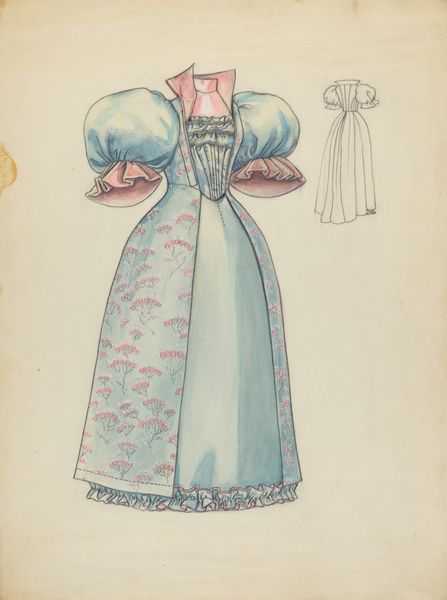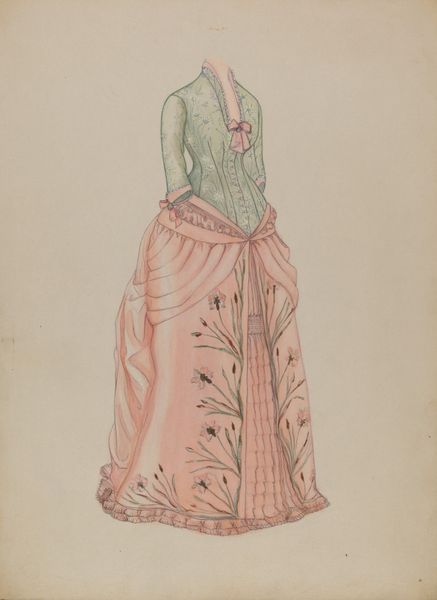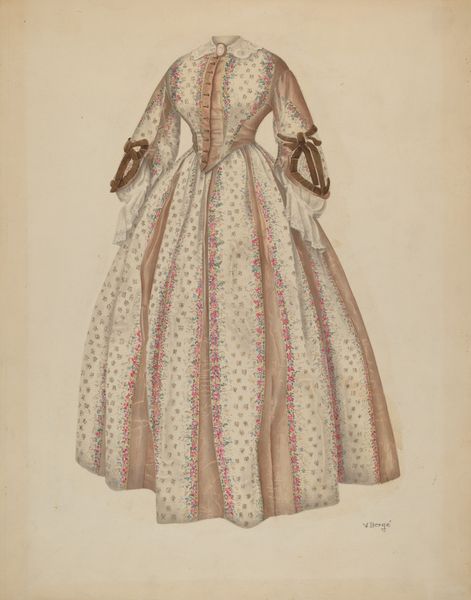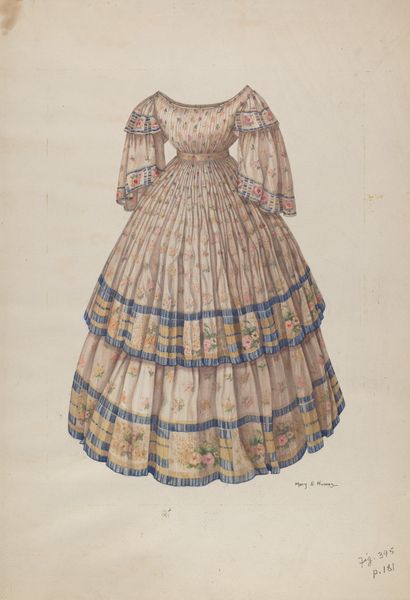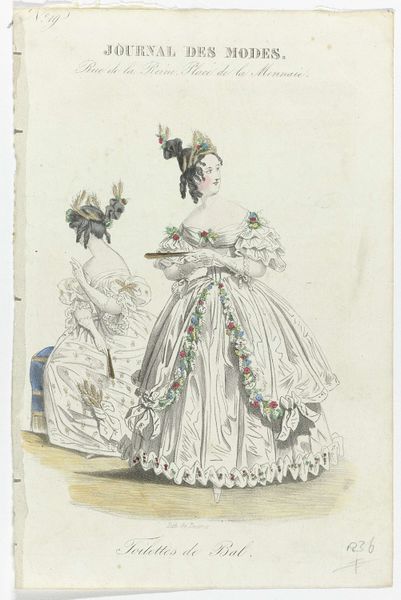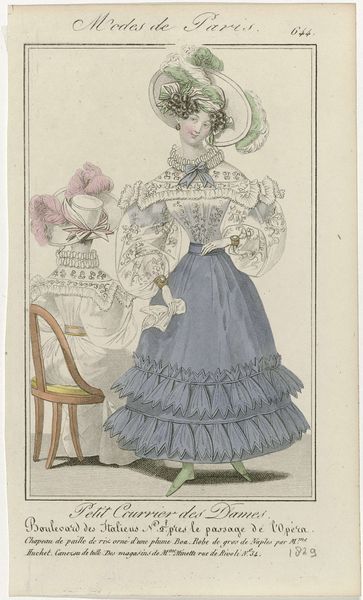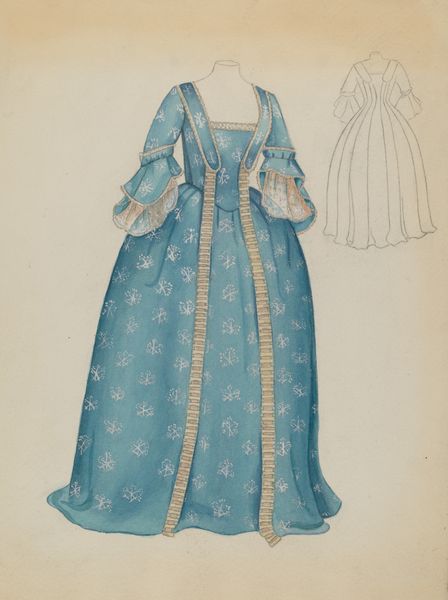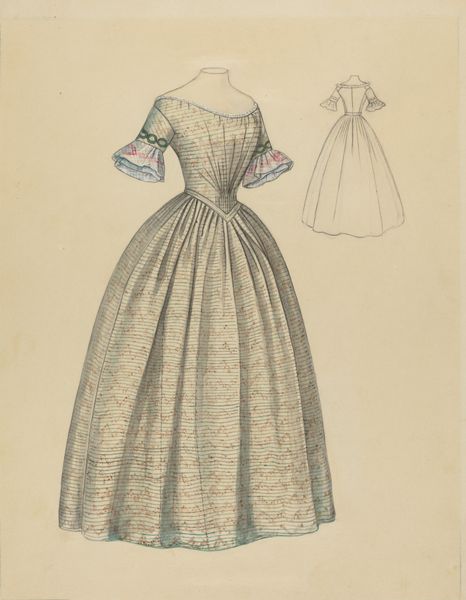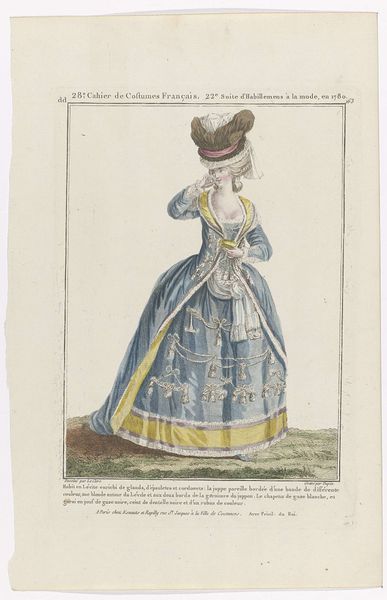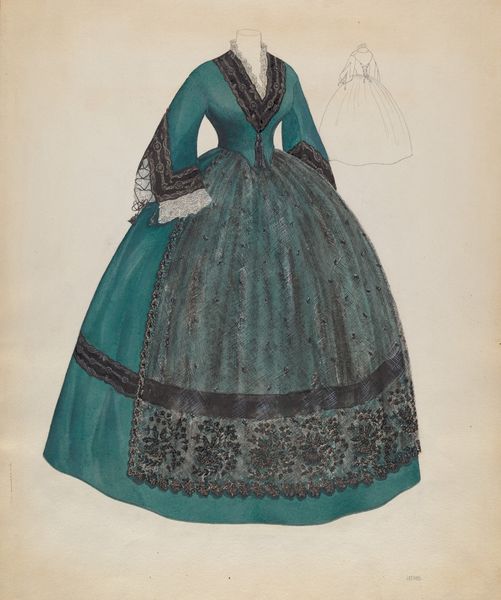
drawing, watercolor
#
drawing
#
watercolor
#
watercolour illustration
#
genre-painting
#
academic-art
#
watercolor
Dimensions: overall: 30.1 x 23 cm (11 7/8 x 9 1/16 in.)
Copyright: National Gallery of Art: CC0 1.0
Curator: Looking at this watercolour from around 1936 by Melita Hofmann entitled "Dress," I’m struck by its gentle fragility. It's so delicate, the soft blue of the dress contrasted with the precise floral details. It feels like a forgotten dream. Editor: The floating dress, disembodied from its wearer, gives me a feeling of wistful nostalgia. Almost as if the joy of dance has passed on, leaving only its material symbol. What social codes do you think such dresses carried? Curator: The garment, specifically as interpreted by Hofmann, seems almost archetypal, recalling ballgowns from decades prior and carrying with it a potent mixture of romance, class aspiration and perhaps even loss relating to interwar social upheaval. You know, a "costume" and set of gestures linked to courtship rituals. Editor: Costume, absolutely. A powerful tool in shaping social identities. Consider how the subtle choices - the cut of the neckline, the placement of flowers – spoke volumes about a woman's position and the performative rituals of bourgeois life in Vienna. Curator: It almost reads like a ghost of what's to come. Its position is interesting as a representation. Look at the way Hofmann plays with transparency, layering the fully realised watercolor dress in the foreground, contrasted to the ghostly sketched figure behind. One feels more permanent and heavy, though still an idea. What is the artist suggesting about memory or reality through these dual representations? Editor: Fascinating point! It could suggest the way ideals shift and blur. Consider the political climate, in the lead up to the Second World War in 1936 - these dresses represent an idealized femininity, and possibly were aspirational but difficult to grasp, perhaps a disappearing vision from old hierarchies amidst new regimes. Curator: So, it seems the garment as artifact, both personal and socio-political marker is something to consider with Hofmann. Thank you, it does bring forth more avenues for me. Editor: Absolutely! The intersection between personal expression and the broad sweep of history always adds depth and nuance, even to a seemingly simple drawing.
Comments
No comments
Be the first to comment and join the conversation on the ultimate creative platform.

